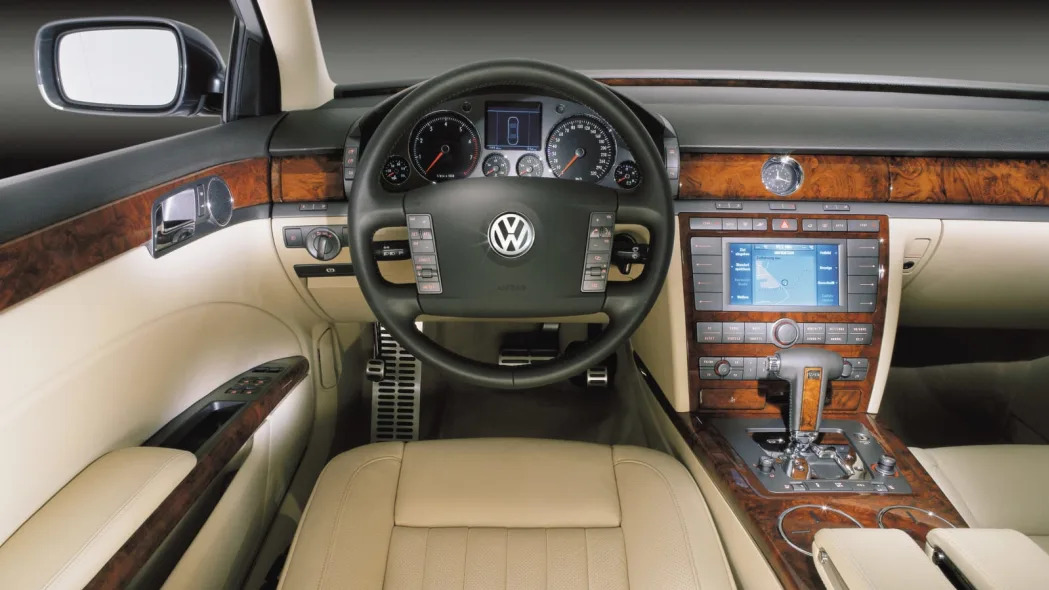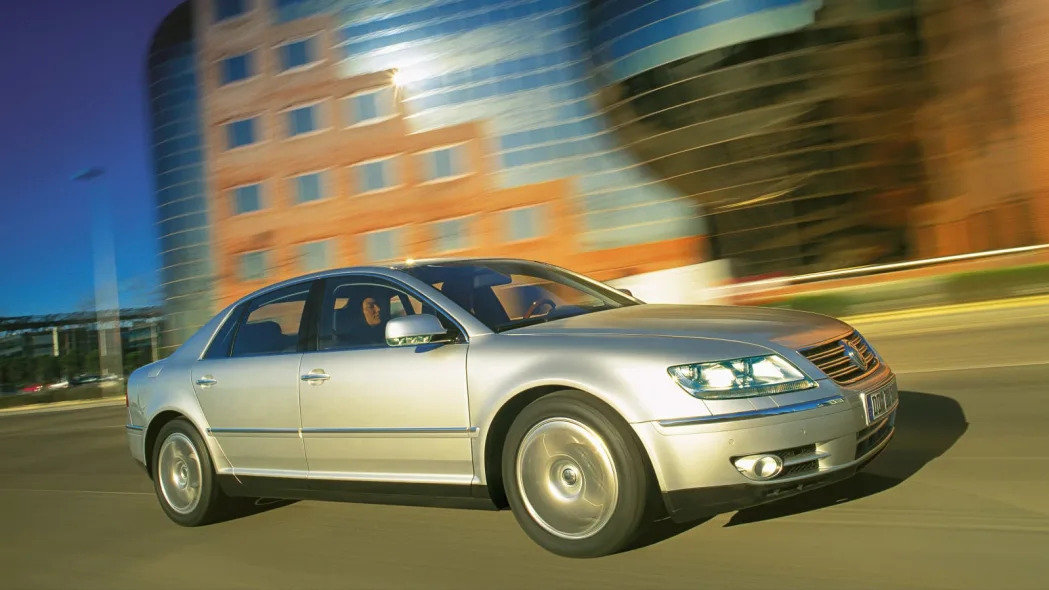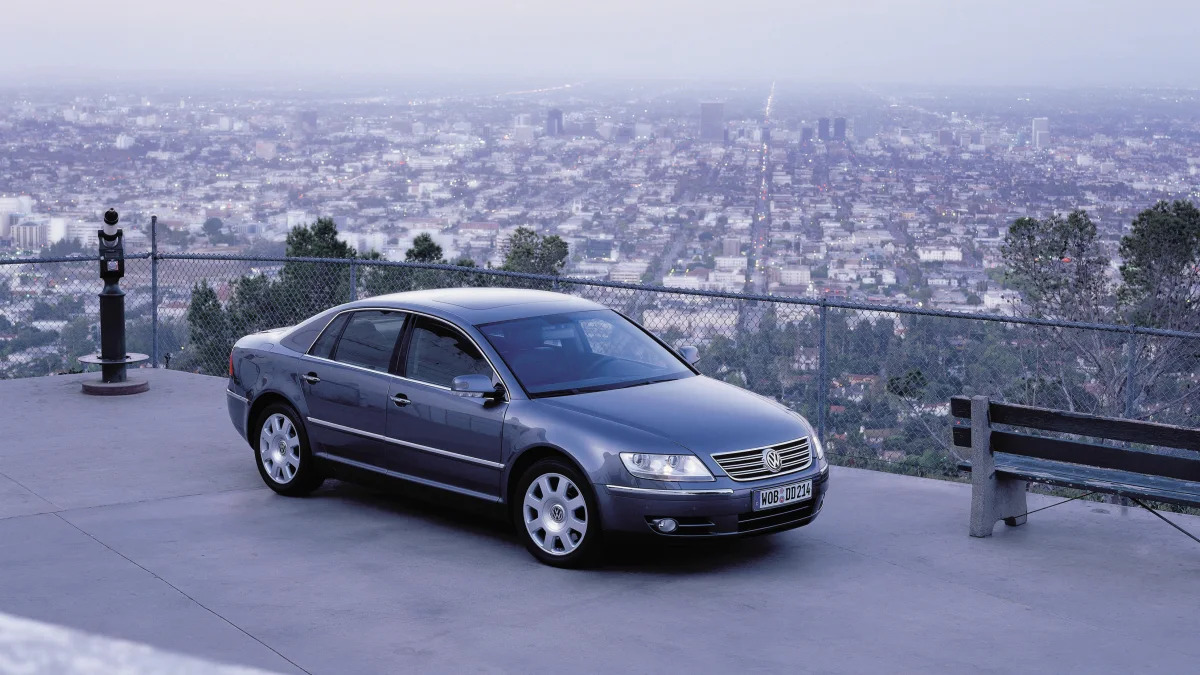Cars like the 2004-2006 Volkswagen Phaeton are automotive outliers that enthusiasts tend to have a particular fascination over. The Phaeton, as a concept in general, never made good sense for a brand like Volkswagen. Unless you consider a luxury flagship model that carries a W12 engine and a nearly $100,000 starting price to be “the people’s car,” then it’s easy to conclude that VW was way out of its zone here. Hindsight is 20/20, right? Americans preferred their luxury cars with luxury badges, because even though the Phaeton may have driven and acted like a top-tier luxury flagship sedan, it carried the downmarket VW badge of cars like the Golf and Jetta.
It’s this very incongruence that made the Phaeton a sales failure here in the U.S. It was consequently only available for three model years, then unceremoniously discontinued. Elsewhere in the world, the Phaeton was relatively well-received. It even got to live through multiple generations thanks to strong demand in Europe, and most notably, China. That’s lucky for VW, too, because the company sunk a ton of money into this project, going so far as building a special all-glass factory — the “Transparent Factory” — to exclusively assemble it in. The Dresden factory was state-of-the-art at the time, and it’s still a sight to behold — nowadays, this location produces the electric VW ID.3.

Why the Volkswagen Phaeton?
Are you interested in the peak of German luxury from the early-to-mid 2000s? If so, line up right here. The Phaeton is an alluring, but also scary, proposition these days. VW spared no expense making this car into a flagship-beating luxury sedan, which means it’s loaded full of goodies. You get to choose between either a 4.2-liter V8 or 6.0-liter W12 engine. The V8 makes 335 horsepower, while the W12 makes a stout 420 horsepower. Both get poor fuel economy, but the W12 is remarkably poor at just 13 mpg combined — of course, both require premium fuel.
Stand-out features like an advanced air suspension, a draft-less climate control system (to avoid direct airflow on occupants), heated/cooled/massaging seats (even in the back), a 7-inch infotainment screen (with CD-based navigation), an available high-end 12-speaker audio system and high-speed-rated air conditioning. The climate control was designed such that it could keep the car at a comfortable 72 degrees Fahrenheit whilst traveling at 186 mph on the autobahn in temperatures up to 122 degrees. And yes, the Phaeton with its W12 engine was capable of 186 mph. The car shared a platform with Bentleys and the Audi A8 after all, so it’s in good company from an engineering standpoint.
You buy a Phaeton today for its sublime, comfortable driving experience, quirky luxury features and cheap price. Just be prepared to spend money on repairs to keep it in full working order. To service it, you’ll need to find a Volkswagen dealer with a Phaeton-certified technician on staff, too, because this car is very different from any other normal VW product.

Which VW Phaeton should I choose?
Since it was only out for three model years, there aren’t many decisions to make. Deciding between the V8 and W12 is very likely the biggest conundrum you’ll have, and even then, you may already know which one you’d rather have. Acceleration isn’t very different between the two, but the W12 is quieter and smoother than the V8.
Equipment-wise, the W12 cars came highly-optioned as standard, but you could option up the V8 Phaetons, too. It just depends what level of luxury you’re after. The higher-option W12 cars have more things that could theoretically break, and servicing the W12 has the higher potential repair cost, but playing it “safe” with a V8 then begs the question: Who wants a low-spec Phaeton? We'll also note that you'll pay more up front for a W12 these days, as the nicer examples tend to be priced north of $20,000. If you're feeling really lucky, V8s can be had for well under $10,000 — don't say we didn't warn you, though.
If you want a color outside of black, white or shades of gray, it’ll be a little harder to find. Most sold were in fairly generic and inconspicuous shades. Meanwhile, most interiors were in either black or beige/tan. A rear seat executive package of sorts was available that swapped the center seat out for a full-length center console, so watch out for that if it’s on your wishlist, too.
Our used vehicle listings can be helpful to find a good deal near you. Narrow the offerings down by a radius around your ZIP code, and pay attention to the deal rating on each listing to see how a vehicle compares with others in a similar area.

What else to consider?
Cheap luxury sedans are out there if you want them. They lose their value quickly, so any number of European luxury sedans would make decent alternatives to the Phaeton. You could search out a Mercedes-Benz S-Class, BMW 7 Series or Audi A8 of the same vintage. While those models aren’t anywhere near as cool as a VW Phaeton is these days (if just due to weirdness and scarcity alone), they’re cheap and also provide excellent luxury car experiences.
If reliability is a concern, you could try to search out an old Lexus LS. Meanwhile, a Jaguar XJ or Maserati Quattroporte are sitting on the opposite side of the spectrum. And if you really want a German car that will convert money into tears and bloody knuckles as efficiently as possible, there's always the W8-powered VW Passat. Truthfully, though, if you’re after a Phaeton, very few cars would be a proper replacement. From the Ferdinand Piëch backstory, to the flat-out improbability that such a vehicle even existed, the Phaeton is a one-of-a-kind type of vehicle. Now, we only hope that yours treats you well.
Related video:










Sign in to post
Please sign in to leave a comment.
Continue